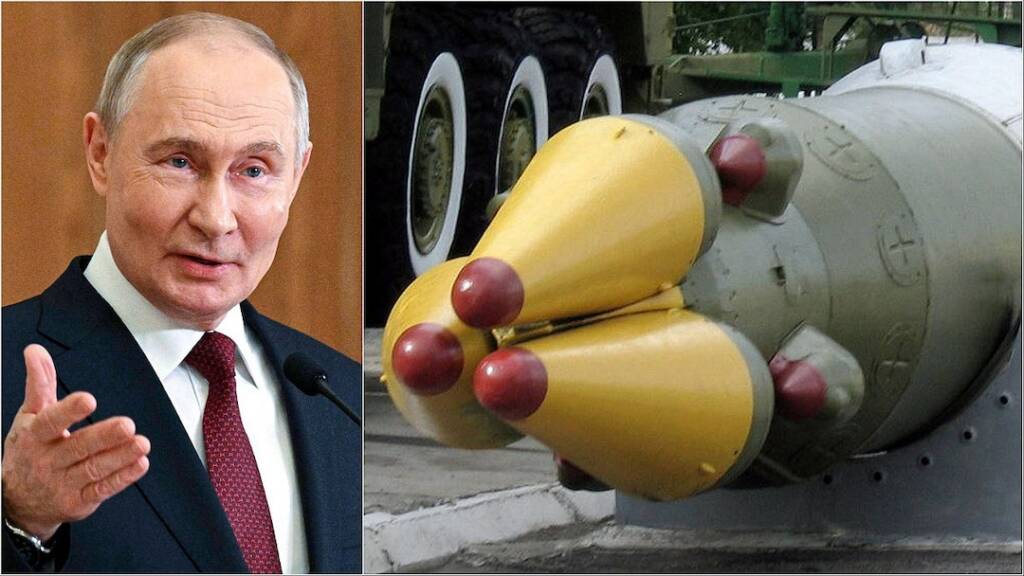Russian President Vladimir Putin has officially confirmed that Oreshnik, Russia’s cutting-edge fourth hypersonic missile, is now in mass production
Introduced last November 21 during a strike on the Ukrainian city of Dnipro, this advanced intermediate‑range ballistic missile (IRBM)—capable of reaching speeds above Mach 10 and carrying multiple warheads marks a pivotal escalation in Russia’s strategic arsenal. The news of which has perturbed many Western nations.
“The serial production of the latest medium-range missile complex “Oreshnik”, which has proven itself very well in combat conditions, is underway,” Putin declared.
Also, according to the Russian President, the strategic missile forces will be supplied with Yars complexes, and the aviation will supposedly be replenished with modernized Tu-160Ms this year.
Putin had earlier declared in 2024 that the Oreshnik is not a modernization of old Soviet systems, but a missile launcher created based on modern developments. In addition, according to him, “Oreshnik” is not a strategic weapon, and he noted that there are currently no countermeasures for such a missile in the world.
What Makes the Oreshnik Deadly?
Hypersonic Speed
Oreshnik thrusts through the upper atmosphere at speeds exceeding Mach 10–11, making successful interception virtually impossible with current air defense systems
Multiple Warheads (MIRV)
It carries three to six independently targetable warheads—or submunitions—detonating almost simultaneously for maximum impact
Ukraine’s military said each warhead contained submunitions and flew in a tight cluster toward the target
Long-Range Reach
With a potential range of 3,000–5,500 km as an IRBM—well short of intercontinental but enough to “threaten practically all of Europe”
Meteoric Kinetic Impact
Putin described its effect as a “meteorite,” heating warheads to ~4,000 °C—the same temperature as re-entry plasma—emphasizing its sheer destructive kinetic energy.
Global Implications
Though the missile reportedly carried conventional—or even inert—warheads in its first use, the display signaled Russia’s technological military heft and served to coerce European and NATO policymakers.
Oreshnik sidesteps constraints of the now-defunct INF Treaty (dropped by both the US and Russia in 2019), illustrating how IRBMs can proliferate unrestricted. U.S. defense analysts label the missile “experimental” but warn it integrates mature Soviet-era tech into a modern delivery system.
NATO & Ukraine held emergency discussions after the November strike, citing concerns over this dramatic shift in Russia’s capabilities. Leaders from Poland, Hungary, and the Czech Republic voiced alarm and reaffirmed support for Kyiv.
Western Analysts stress that while Oreshnik is formidable, it’s not a revolutionary technology—primarily an amalgamation of past designs with modern tweaks.
Further testing and deployment will likely occur in 2025, as Russia moves to field Oreshnik fully within its missile forces
Putin has even challenged Western counterparts to demonstrate their defenses against Oreshnik—offering a “duel” at a public press event.
Oreshnik is a strategic nod in Russia’s nuclear signaling playbook: fast, multi-warheaded, long‑range—but fundamentally rooted in legacy technology. Its mass production is a deliberate move to both expand capabilities and intimidate adversaries—though industrial bottlenecks mean it’s not yet a fleet of hundreds.
Expect ongoing deployments through 2025, heightened NATO monitoring, and intensified scrutiny around missile defense planning. Whether Oreshnik becomes a game-changer or merely a potent symbol hinges on Russia’s ability to scale production—and Western ability to counter or deter its threat.
